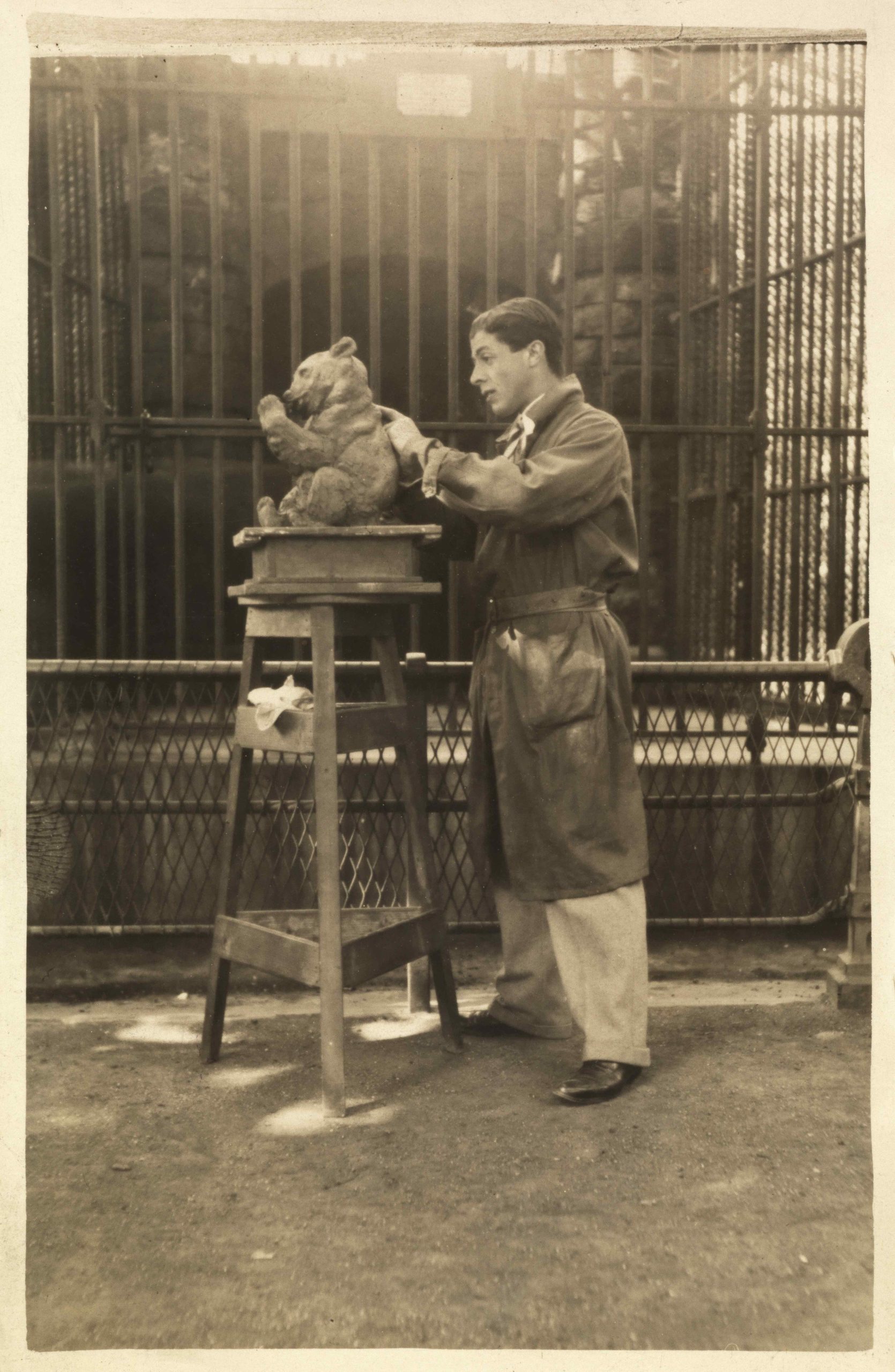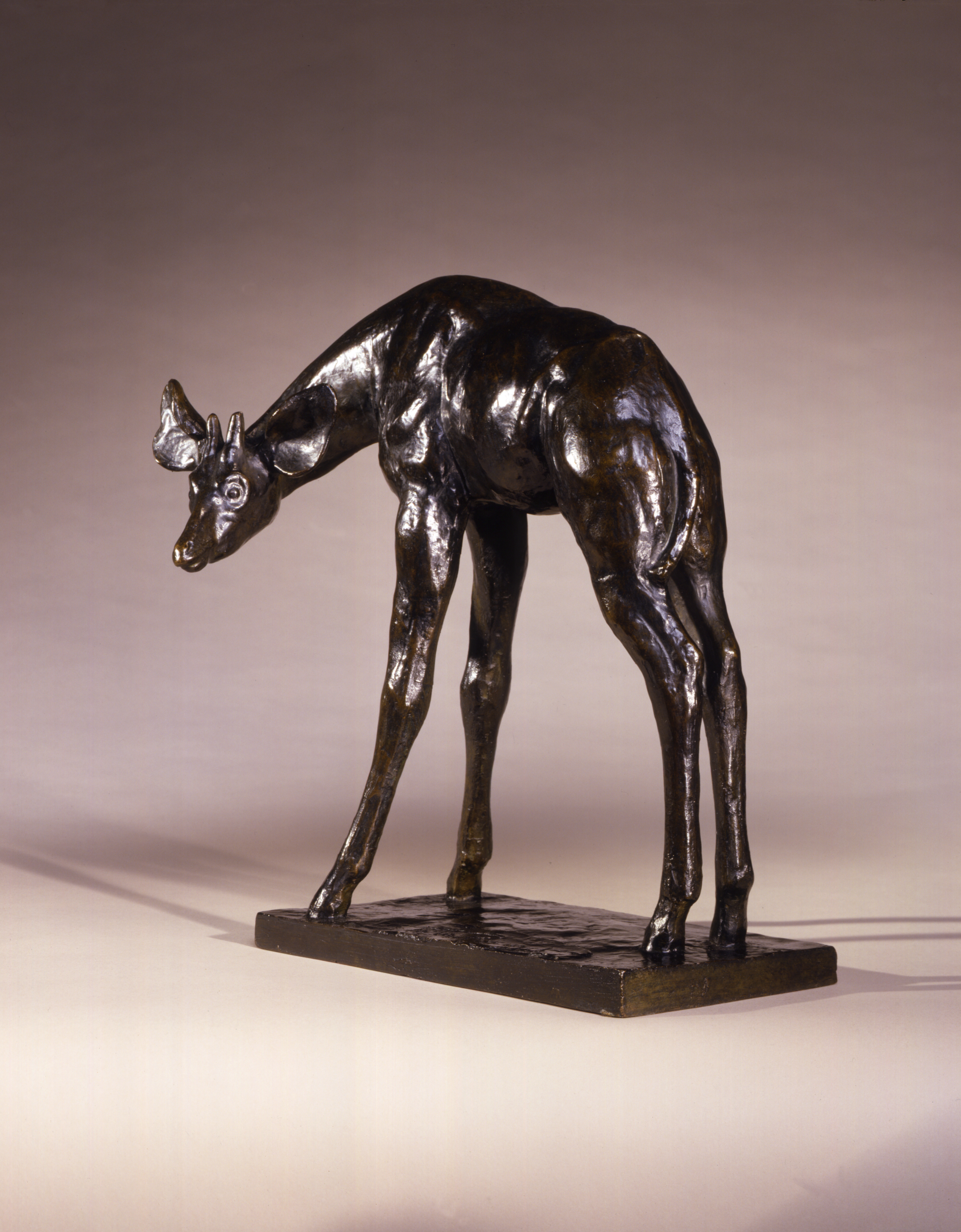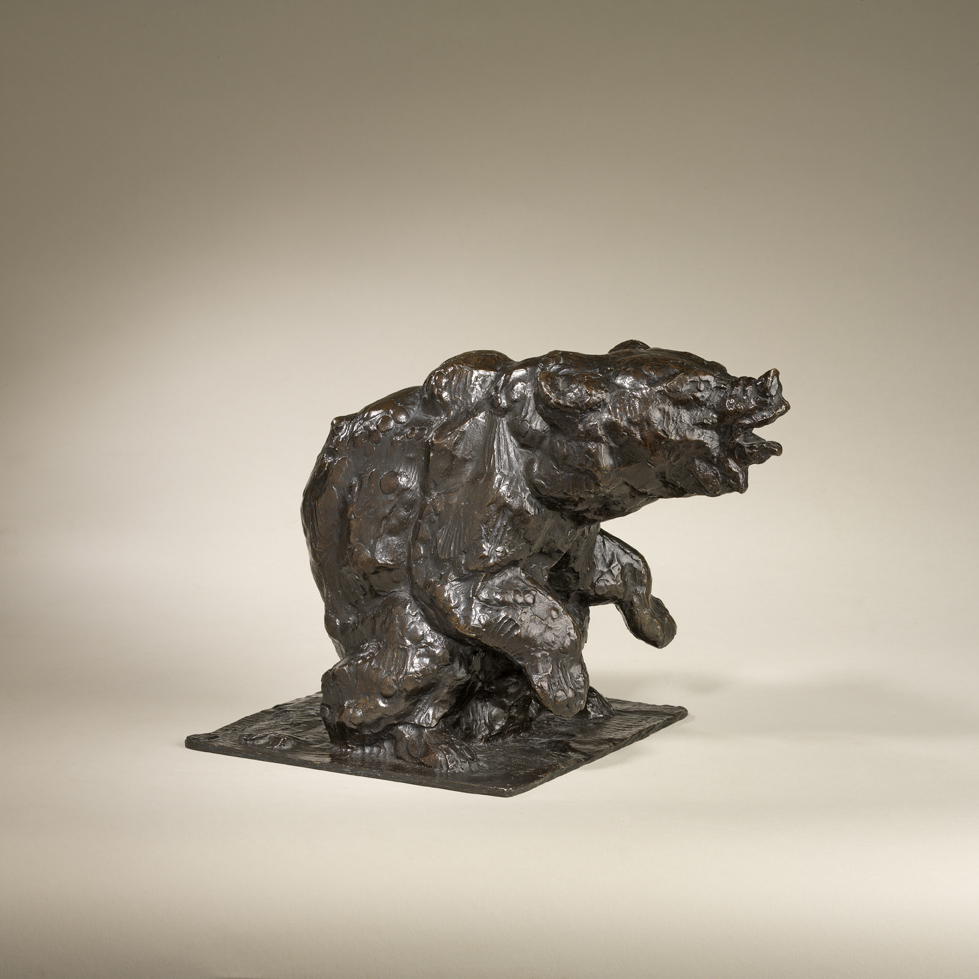The success and appeal of his sculpture lies in Van Rijswyck’s observation of the animal in its surroundings and his ability to capture them in characteristic, evocative and elegant poses.
Van Rijswyck concentrated primarily on modelling young exotic animals, many of which were new to Europe and had only recently been imported from the Colonies. Antwerp Zoo had a reputation for acquiring the most exotic imported species to be seen in mainland Europe.
Like Rembrandt Bugatti he was intrigued by the individual personalities of each animal he sculpted and was keen to portray their temperament and character. His work was cast in several mediums including plaster, terracotta, ceramic, and bronze, but rarely dated.
In some of Van Rijswyck’s sculptures, elements of the Art Deco style, so strong in the 1920’s and 1930s are evident. He achieved this by exaggerating areas of the animals’ anatomy and making them more angular, thus making the overall shape of the animal and composition of the sculpture more geometric in form.
Thierry Van Rijswijck was born in Antwerp on 8 March 1911. A bold sculptor and prolific ceramicist, he was educated at the Antwerp Academy, before emerging as a highly successful animal sculptor. He worked regularly at Antwerp Zoo, and counted Albéric Collin and Raymond de Meester de Betzenbroeck among his friends and colleagues. Many of his animal sculptures show a clear stylistic affiliation with their work, which can on occasion lead to confusion.
Around 1935, Van Rijswijck settled in Paris, where he regularly took part in exhibitions. After the Second World War, this high-spirited artist continued to live and work in France, and in 1954 he exhibited his works with success in the cosmopolitan milieu of Monte Carlo. Apart from some portraits and figurines of workers, most of his works portrayed exotic animals, mainly mammals, and often young in age, which he always tried to display in elegant poses. It is clear that a formal decorative nature was a fundamental characteristic of this artist’s work. Although he rarely dated his pieces, whatever the medium, the powers of observation and keen eye for styling that they display are typical of the Art Deco period. Van Rijswijck also paid great attention to the play of light on pelts in motion and on trembling muscles. The anatomical particularities of each species sometimes led him to create sleek geometric volumes, creating an exceptional decorative effect. In the way he approached his models – parrots and macaws in particular – the sculptor seems to be fascinated by both the intriguing uniqueness of each individual and their mysterious inaccessibility. Formal and inspirational parallels with the work of artists such as Arthur Putnam, Irenée Rochard and Marcel Sandoz are apparent.
Van Rijswijk was interested in all aspects of ceramics and regularly visited the pottery region of Vallauris, on the Côte d’Azur; he died in a car accident there on 14 May 1958.
Artworks
View all Artworks >
Wildebeest, c. 1930
Thierry Van Ryswyck
A fine quality, early twentieth century bronze model of a ‘Wildebeest’ by Thierry Van Ryswyck (Belgian, 1911-1958). This bronze was produced using the lost wax […]















